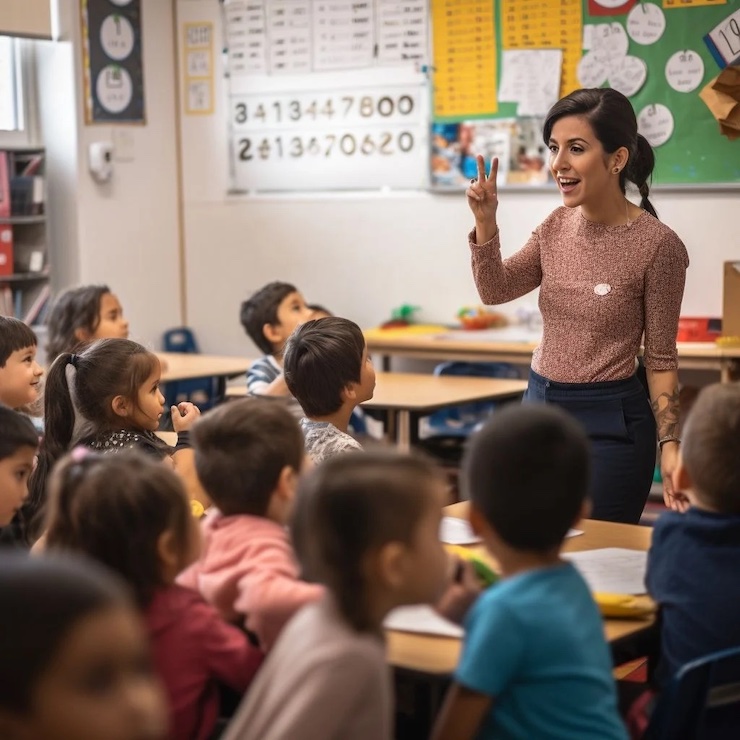The younger the age, the easier it is for us to acquire a new language. It is definitely a good practice to send a child to Spanish classes as young as kindergarten age (or even younger!). However, teachers may find it hard to catch the attention of such small students, so using absorbing teaching aids is absolutely crucial.
Finding useful materials, especially Spanish kindergarten worksheets, can be quite a task. Learn more about how you can improve your classes and make your job easier!

What Can Students Learn From Using Spanish Worksheets for Kids?
Use or adjust printables in a way that they can be clear, understandable, and fun to work with for children. Add cartoonish illustrations and fun activities and choose basic vocabulary that can be easily memorized. Check out what exactly your students will learn from different Spanish worksheets for kids:
Alphabet
To help children recognize and pronounce Spanish letters, you can give them our Spanish alphabet worksheets. To make it easier for a child to remember every letter, it is recommended that they get an example of using it in a simple Spanish word.
Numbers
Another thing worth teaching with our Spanish worksheets for kindergarten is numbers. After presenting them from our printables, you can ask the children to count items near them (like chairs or toys) for better practice.
 Animals
Animals
As children usually adore animals, it is certainly an excellent idea to include their names in your Spanish classes. They can be both pets and wild animals. You can use toys from the kindergarten resembling animals and ask your students to name them in Spanish.
Food
Children find it easier to learn about something they are familiar with, and food surely falls into that category. When your kindergarten students learn some vocabulary from this area, you can ask them about their likes and dislikes, for instance.
Colors
Our Spanish worksheet for kindergarten explaining colors can inspire a lot of further activities. Children can point to items around them and name their colors or the other way round – search for objects having the color you name in Spanish.
Body Parts
Teaching body parts is a pretty simple task because, apart from Spanish worksheets for kids, you can use your own body as a teaching aid. You can point to your ear, nose, leg, or another body part and name it in Spanish, and then ask your students to do the same.
Sayings
If your little students are already familiar with some vocabulary, you can try to introduce Spanish sayings for beginners. We have prepared cartoonish printables showing a visual representation of a proverb for you to use so it will be easier for students to learn and remember the phrase.
What Are Other Teaching Aids to Use in Spanish Classes for Kids?
A Spanish alphabet worksheet or a printable with animals will be useful to introduce new vocabulary, but then, it is worth practicing it in the most engaging way you can. Here are some teaching aid suggestions from us:
Games
There is no surprise that children just love games – so why not use them in your Spanish class? For example, in ¡Mézclalas!, they can learn to recognize sounds and letters, and Mar de Sílabas can help them build Spanish words from syllables.
Flash Cards
Practicing the vocabulary acquired from any Spanish kindergarten worksheets can be much easier and more interesting with flash cards. You can use them to help children memorize, for example, numbers, animals, colors, or body parts.
Children’s Books
If your students already know some basic Spanish, you can try reading them simple children’s books. To make them understand the story, you should translate them while reading and ask your students to repeat some words or phrases to learn them.
 Children’s Poems
Children’s Poems
In order to make it easier for kids to memorize new vocabulary, you can teach them children’s poems. Thanks to rhyming lines, kids will memorize Spanish words and phrases more easily.
Send Me Spanish Worksheets for Kids!
The Final Note
As you can see, our Spanish worksheets for kids can be very helpful in organizing your classes. You can introduce lots of useful vocabulary with them and teach kids how to name colors, numbers, animals, food, etc., in a foreign language.
Thanks to simple design and cartoonish illustrations, they are very kids-friendly, and they help children learn more effectively. Then, you can use other teaching aids such as poems, games, or books for further practice.
 Animals
Animals Children’s Poems
Children’s Poems